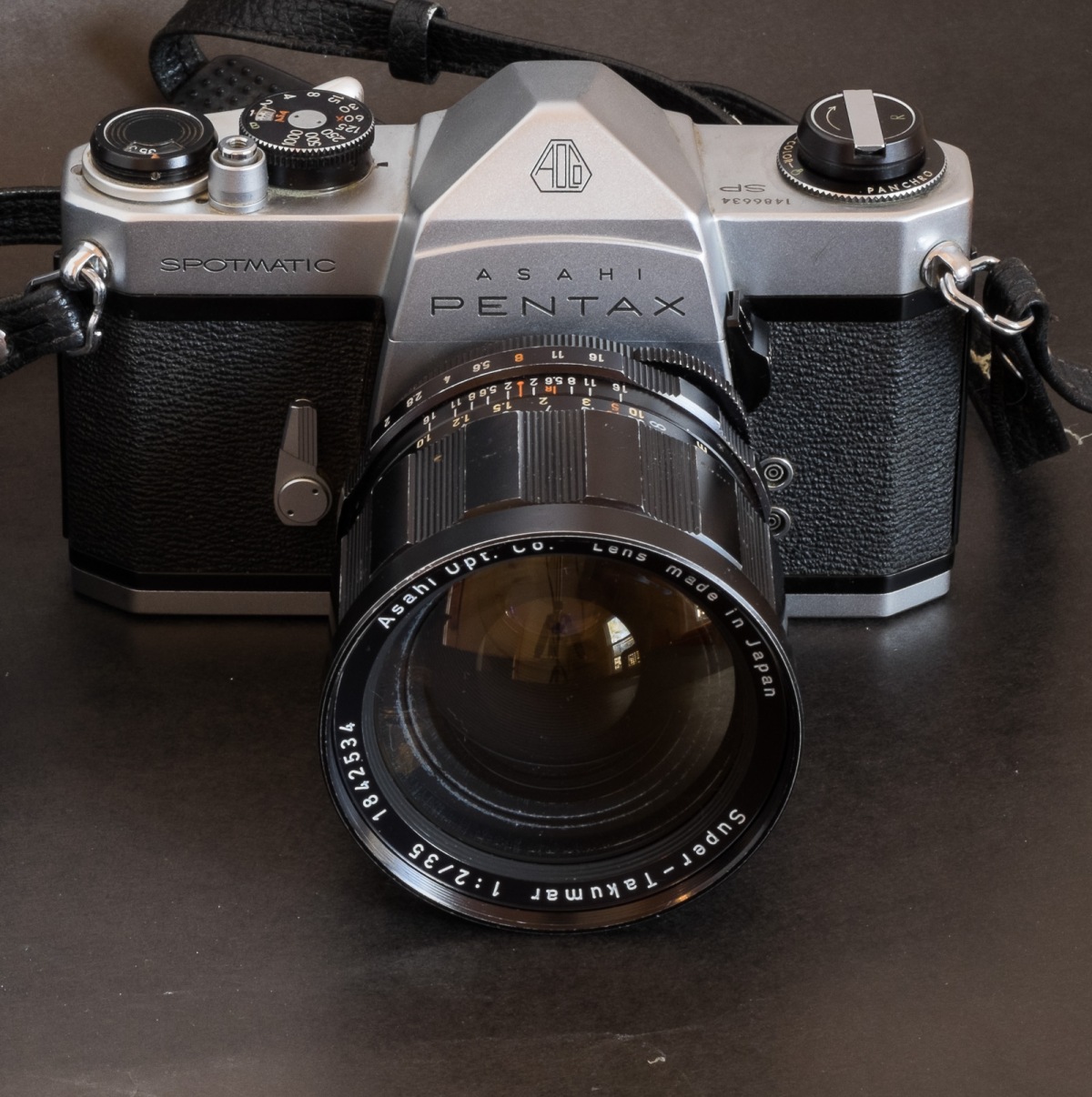The Asahi Optical Corporation (known for its Asahi Pentax and Pentax cameras) was founded by a gentleman named Kumao Kajiwara. The brother of the founder was a painter of some fame named Takuma Kajiwara, and in his honor, Asahi named its lenses “Takumar”. We’ve seen stranger things in the past: in the thirties, Leica had named a line of lenses “Hektor”, for Oskar Barnack’s dog, and in 1901, Daimler cars had been re-branded “Mercedes” after the daughter of their main car dealer on the Cote d’Azur.
Takumar lenses still enjoy a very good reputation, and some of them are highly sought after and sell for hundreds of dollars.

With most vendors (Canon or Minolta, for instance), the different generations of lenses are named for their mount (a Canon FL lens has a so called FL mount and works stopped down, while a Canon FD lens has the so called FD mount that enables full aperture metering). No such thing with Pentax. The name of the lens (Super-Takumar as opposed to Super-Multi-Coated Takumar or SMC Takumar) relates to the coating of the lens. The most recent lenses (Super-Multi-Coated or SMC) are generally the ones with the updated lens mount supporting Full Aperture metering, but there are exceptions both ways. The only way to determine for sure that a Pentax screw mount lens can meter at full-aperture is to have a good look at the mount.
Coating and Multi-Coating – what is it about?
When it comes to the optical lenses used with cameras, flare is the enemy. And reducing light reflections also improves the contrast (the images look sharper). That’s why lens coatings were developed.
A coating treatment is engineered to block the reflections in a given wavelength. Multi-coating treatments block reflections in a wider range of wavelengths.
Lens coating was a process unknown to the public until Pentax and Fuji started using it as a differentiator in their advertising campaigns in the early seventies (it had been invented before WWII in Germany and had long been considered a military secret).
The 42mm Pentax lens series – an over-simplified summary…
Auto-Takumar: 42mm lens mount, with aperture pre-set: the photographer has to cock the spring loaded aperture mechanism of the lens after each shot, and will compose and focus at full aperture. The lens will automatically stop down to the pre-set aperture when the shutter release is pressed. The pre-Spotmatic cameras of the late fifties-early sixties (Model K, Model S) came with Auto-Takumar lenses.
Super-Takumar: 42mm lens mount. Automatic pre-selection lens for stopped down metering cameras. They were released in the early sixties and their long sales run more or less corresponds to the Spotmatic’s. The aperture pre-set mechanism does not need to be cocked by the photographer anymore. And the lenses benefit from some form of single layer coating.

Super-Multi-Coated Takumar: Introduced with the Electro-Spotmatic of 1971, they provide full aperture metering on the ES, the ES II and the Spotmatic F cameras – the lens mount was modified and now transmits the pre-selected aperture value to the camera via a prong (because it made its first appearance with the Pentax Electro-Spotmatic, this variant of the m42 Universal mount is sometimes named Pentax ES mount).
Super-Multi-Coated Takumars remain compatible with the cameras with stopped down metering like the original Spotmatic and the Spotmatic II (although compatibility issues arise when mounted on cameras of other brands and with some modern lens mount adapters). Obviously, they get their “Super-Multi-Coated” name from Pentax’s multi-coating.
SMC Takumar: Minor cosmetic differences with the “Super-Multi-Coated” Takumar. Same full aperture metering capabilities and same Pentax ES mount. Introduced with the Pentax ES in 1972.
To the despair of Zeiss and Nikon who had been manufacturing multi-coated lenses for years without letting it known, Pentax decided to use “multi-coating” as a marketing differentiator – and using a short acronym such as SMC probably helped convey the message to the consumers.
In any case, Pentax’s SMC multi-coating was more than a marketing ploy: when Popular Photography tested the multi-coated lenses of Pentax against their competitors, the SMC coating proved to be the best by a wide margin.
The bayonet mount lenses launched with the KM, KX and K2 bodies of 1975 are simply named SMC Pentax.
Are they radio-active?
Some of the high-end (F/1.2, F/1.4) Super-Takumar are radio-active- as are other ultra-luminous lenses from other vendors like Canon. Because the optical glass contained Thorium. The use of Thorium was banned at a later stage because of the harm it could do to the workers in the glass foundries.
I’m not an expert in this field – what I’m reading is that the lenses are not very radio-active (they would veil the film if they were), and that unless you grind the lens, and ingest or inhale the dust, you should be safe. (more about the issue: http://www.orau.org/ptp/collection/consumer%20products/cameralens.htm).
What to buy?
The Super-Takumar are probably the most common of all (thanks to their long production run), but even the shorter lived S-M-C and SMC Takumars are easy to find. Lenses compatible with the “universal” m42 mount abound, but there are very few third party lenses compatible with the Pentax ES variant. If you want a lens that does not exist in the Pentax SMC line-up (a trans-standard zoom, for instance), Tamron Adaptall lenses are the best option.
More about the Pentax 42mm lenses: http://www.klassik-cameras.de/Pentax_Takumar_e.html
